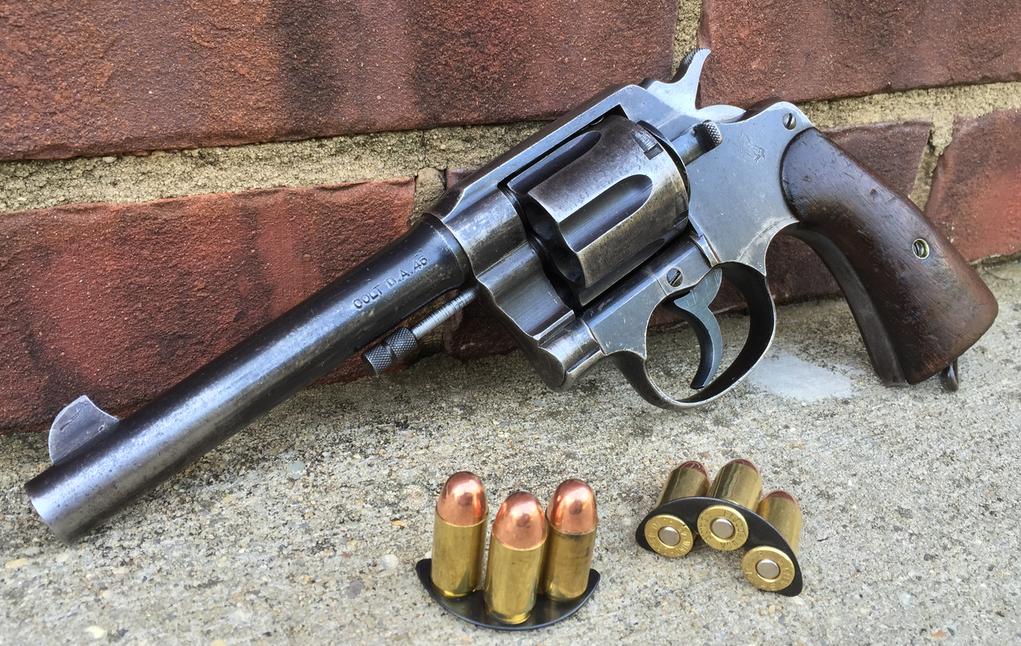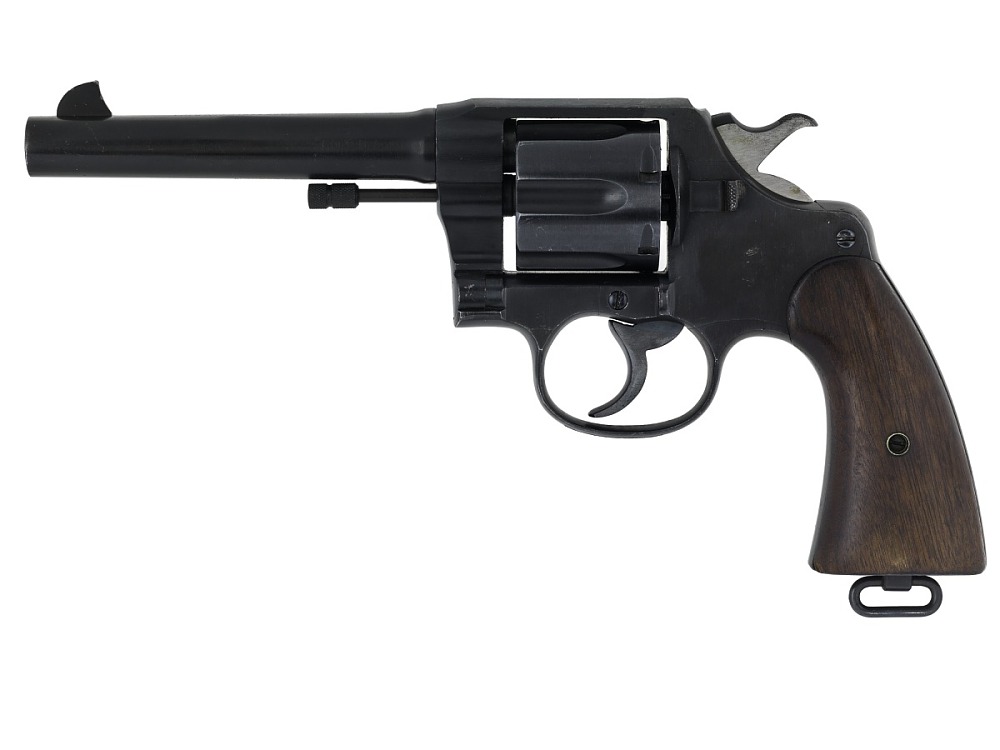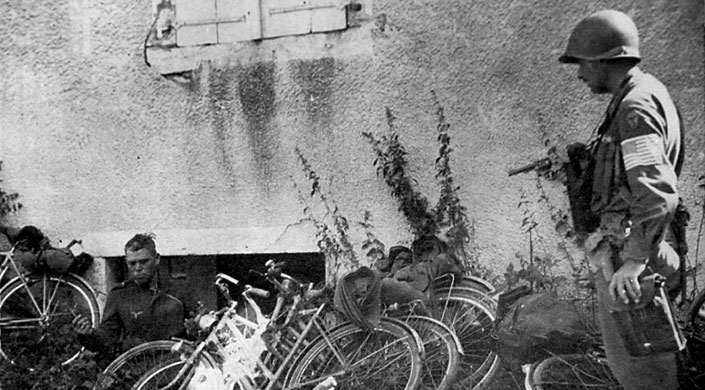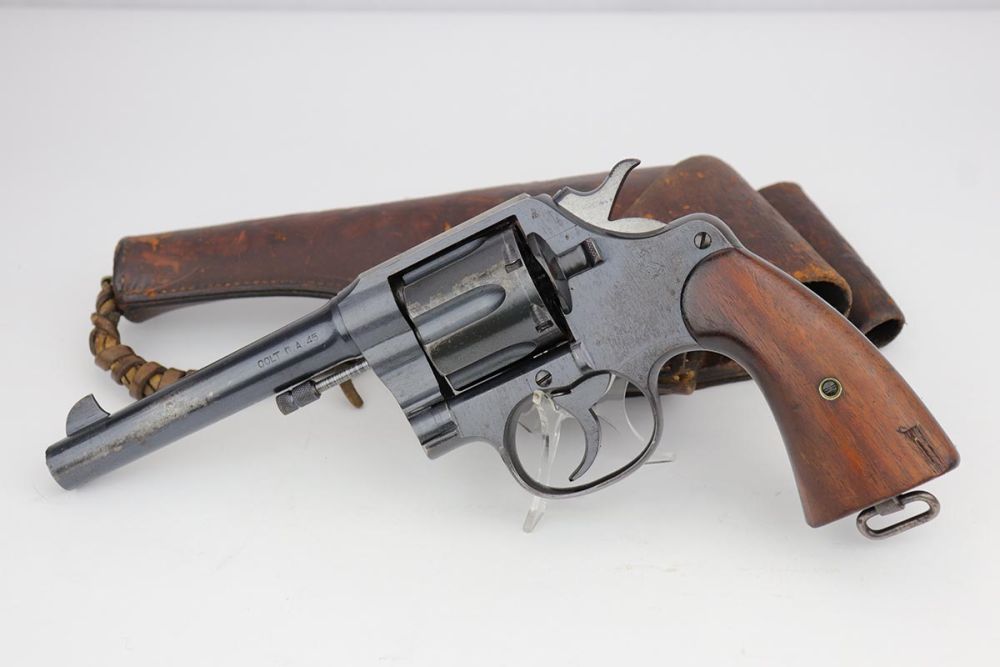
“I need guns, lots of guns,” America in 1917, probably. Yep, America went feet first in the first World War armed with the Springfield 1903 and Colt M1911, and both kicked the Kaiser’s ass back to Germany! That’s what pop culture and movies will tell you, and lord forbids you insult the two World Wars claim by 1911 fans. What If I told you that the M1911 pistol wasn’t the main service handgun of the United States in WW1? What If I told you it was the Model 1917 revolver?
You might be crushed to hear or call my claim dubious, but alas, it’s true. You see, when America entered the war in 1917, there simply weren’t enough of the new 1911s to go around. Contracts went out to produce more and more, but it wasn’t enough. Thus we turned to Smith and Wesson and Colt to develop a revolver for use by doughboys overseas.

This seems to be a theme in WW1 American arms. The Springfield 1903 wasn’t the main rifle of American forces either. The Enfield M1917 rifle armed more Americans than the Springfield rifle, and the M1917 revolver armed more Americans than the M1911.
Even at full production, the machinery and expertise just didn’t exist to produce a ton of 1911s all at once. However, Colt and S&W had been producing revolvers for over a century at this point. The machinery and expertise were there, and they could produce revolvers alongside M1911s to supplement the handgun.
The Two Model 1917 Revolvers
Smith and Wesson had been developing a model of their Hand Ejector Second Model for the Brits and Canadians in .455 for the war. With the war raging on, Smith and Wesson saw the writing on the wall and began experimenting with chambering the Hand Ejector Second Model in the 45 ACP cartridge.
Obviously, there was a major issue with chambering an automatic cartridge into a revolver. An automatic cartridge doesn’t have a big pronounced rim to allow for easy ejection. This led Joseph Wesson to invent the half-moon clip, which would hold three cartridges together and provide a surface for the ejection rod to engage and eject the empty cases.

With the need for more service sidearms, the Army saw merit in the idea and dived in headfirst. They even offered a contract to Colt to produce the same. S&W patented the half-moon clip, but at the request of the Army, they allowed Colt to use the design free of charge.
The S&W M1917
As stated, Smith and Wesson utilized the Hand Ejector Second Model of their modern double-action revolvers. This duty-sized revolver would more or less be the foundation for revolvers for the next century.

The 5.5-inch barrel nearly matched the 1911’s 5-inch barrel, so velocity remained the same. The gun held six rounds in two half-moon clips. The cylinder opened to the side, and a hand ejector would eject empty cases.
Smith and Wesson machine a shoulder into the cylinder for the rounds to headspace off of. This also allowed the gun to load and fire the 45 ACP round without the moon clip, although ejection would be an issue.
The Colt Model 1917
Colt took M1909 New Service Revolver and converted it to 45 AC by boring out the cylinder and cutting it to accept moon clips. This was also a double-action revolver with an exposed hammer and a 5.5-inch barrel. It held six rounds of 45 ACP in two half-moon clips.

Early models of the Cold Model 1917 lacked a shoulder machined into the cylinder, so it wasn’t reliable without the half-moon clips. The rounds could slip too far forward. Later production models would feature the shoulder to prevent this and allow for firing with half-moon clips.
Into War
Two-thirds of Americans armed with handguns in WW1 carried Model 1917 revolvers. They were quicker and easier to produce, and America wanted as many guns as possible in the trenches. These guns were also sent to France on the lend-lease program to support their efforts at war.
Handguns in war contribute very little, so it’s not like the M1917 changed the face of war or made a lasting impression like the machine gun or poison gas. However, the weapons reportedly served very well overseas and were generally liked by the troops that carried them.

The Model 1917 moon clips did create a bit of an issue. Moon clips aren’t like magazines. They are rather flimsy and weak and can often be viewed as disposable. They are thin pieces of cheap metal that rust, bend and break. Heck, even today, modern moon clips still kind of suck and don’t stand up well to rough handling.
Moon clip deformation could cause the cylinder to lock up or prevent it from closing. Logistics can always be a nightmare in war, and if you broke your moon clips, it might be hard to get extras at the front. Luckily, both guns could be fired without min clips, and they just couldn’t be swiftly reloaded.

Speaking of reloads, moon clips worked as proto speed loaders. The speed loader hadn’t been invented just yet, and the half-moon clips make reloading a revolver quick, organized, and easy.
After the Great War
If you liked the Great War, just wait. The bigger, better sequel was on the way. The M1917 didn’t retire after World War 2. They found their way into the hands of American soldiers in WW2, in Korea, and even into Vietnam. In Vietnam, they were used by tunnel rats in situations where an automatic malfunctioning might mean life and death.
The M1917 wasn’t retired from military service until 1975. They were also popular options in the civilian world. Popular enough that Peters ammunition company developed the 45 Auto rim. These cartridges had pronounced rims that allowed them to be used in M1917 revolvers without the need for moon clips.
M1917 revolvers are popular collector’s items, and their prices have skyrocketed substantially. Smith and Wesson brought back the M1917 as the Model 22 of M1917 as part of their Classics line, but hell, these are even tough to find, and I would gladly grab one if presented the chance.

The M1917 was a revolver designed and fielded essentially out of desperation. The little six-gun has become a fascinating part of small arms history that created an entirely new genre of revolver. Even to this day, revolvers in automatic cartridges are a popular choice that still uses moon clips and machined shoulders. The M1917 served democracy well and deserves a spot beside the M1911 in American sidearms.



